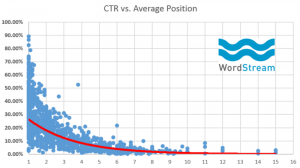 CEOs are notoriously numbers driven. They care about numbers and results, not editorial schedules and topic brainstorms. And the only thing the want to know about the corporate blog is that it drives growth in reach, conversions, and the bottom line.
CEOs are notoriously numbers driven. They care about numbers and results, not editorial schedules and topic brainstorms. And the only thing the want to know about the corporate blog is that it drives growth in reach, conversions, and the bottom line.
As a marketer, it’s up to you to translate the performance of the corporate blog into data that the CEO actually cares about. Fortunately, more and more of these useful metrics come to light as marketing technology develops. This makes it easier for you to do your job and report on it in a digestible way to the people who matter.
Here’s a look at five metrics you can use to translate the performance of your corporate blog into real value for your CEO or C-Suite.
1. Overall Reach Metrics
Overall reach metrics such as visitors, downloads, and page views can be success indicators to use when talking to your CEO about the corporate blog, but they have to be put into context.
Compare these metrics in terms of a trade show or live marketing event. How much do you invest in reaching 500 target customers at an in-person event? Then compare that rate to the cost of maintaining a blog that reaches 500 target customers per month (or more). Using these numbers to directly compare the reach of your corporate blog will clearly articulate the value to your CEO.
2. Networking Reach Metrics
Beyond the overall reach of your blog, you should also report on how your blog receives is found. Report referrals, inbound links from other websites and visits from search engines as evidence that your corporate blog efforts are attracting new visitors, existing customers or curious journalists.
You can also compare your website traffic to your competitors using Alexa.com. While this number is a ranking and is not exact, it can help to clue your CEO in on the impact your blog has on closing competitive awareness gaps or widening a competitive advantage. Convince and Convert cites Open Site Explorer as a useful tool for tracking and reporting on this information.
3. Lead Generation Metrics
Lead generation metrics are more closely tied to the bottom line than website visitors, so they’re much more interesting to your C-Suite. Report on form completion data you’re gathering through your blog and content efforts from call-to-actions, landing pages and contact forms, then report on the percentage of those leads that sales deems “prospects.”
This will help your CEO clearly see the impact your corporate blog has on generating sales opportunities for your company.
4. Lifelong Email List Metrics
Beyond initial lead generation, take a look at your email list metrics to consider which email newsletter campaigns or types appeal to subscribers and existing customers that have been on your list for a long period of time. These are customers who have signed up to stay connected with your company in the long run to keep updated with what you’re doing and gain a competitive edge using your insights.
These customers are often more valuable because they are invested in a long-term, loyal relationship. By tracking this information (such as revenue per 1,000 emails sent), you can arrive at a figure that represents the value of these long-term email newsletter subscribers.
5. Sales Generation Metrics
Obviously your CEO is interested in sales that are directly attributed to the corporate blog. Since your blog is a gateway for people finding your website, you’ll find that some of people that read your blog and become leads also become customers.
Because the B2B sales cycle isn’t immediate, having a CRM in place to follow people who found your blog through the customer journey is critical to showing sales generation metrics to your CEO. However, include this number in the context of these other metrics to show that much of your corporate blog efforts are investments in relationships that lead to future business, not immediate payouts.
Your corporate blog is a valuable resource for driving business growth and development over time. Show your CEO the company blog’s value by reporting on these metrics on a regular basis. Don’t let the lack of data doom your hard work planning and writing your blog. Translate your blog performance into real numbers and data to validate your efforts and increase understanding in the C-Suite.
(282)
Report Post







